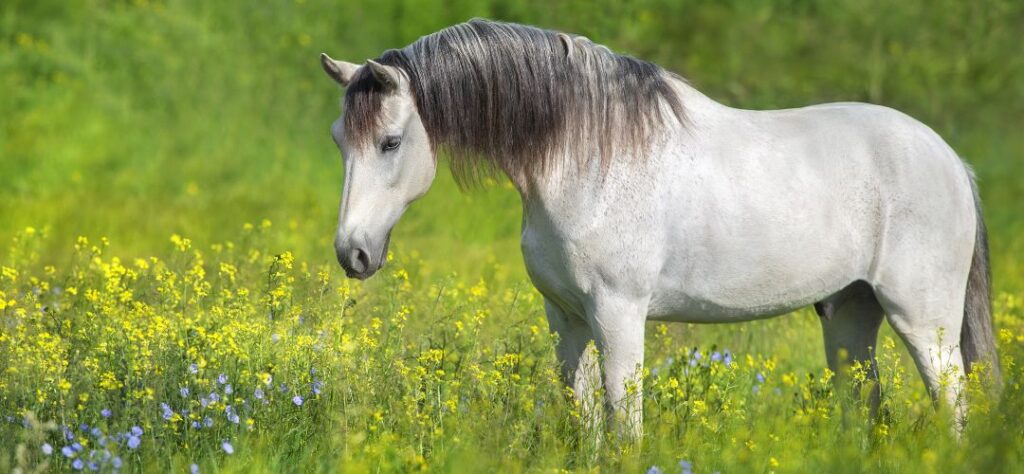Spring pasture is an essential part of a horse’s diet, providing them with the necessary nutrients they need to thrive. As the weather warms up, horse owners need to pay special attention to how they manage their horses’ grazing time. In this article, we will explore what spring pasture is, provide maintenance tips for horse owners, discuss how to transition horses to spring pasture, and offer strategies for managing grazing time in the spring.
What is Spring Pasture?
Spring pasture refers to the lush green grass that grows during the spring season. It is a valuable food source for horses, offering a variety of nutrients and providing them with the opportunity to graze in a natural environment.
It is essential for horse owners to monitor the quality of the spring pasture to ensure it is free from toxic plants and chemicals. Certain plants, such as buttercups and ragwort, can be harmful to horses if ingested.
Spring Pasture Maintenance Tips for Horse Owners
Maintaining spring pasture requires careful planning and regular maintenance. Here are some tips to help horse owners effectively manage their pastures:
- Inspect the pasture for any hazardous objects or toxic plants. Remove them to create a safe grazing environment for your horses.
- Check the fencing to ensure it is in good condition to prevent your horses from escaping or getting injured which could lead to overconsumption.
- Review soil tests to assess the nutrient levels and pH of your pasture. You can implement appropriate fertilization practices to improve the grass quality based on the results.
- Rotate pastures periodically to avoid overgrazing and allow the grass time to recover. This will also help prevent the growth of weeds and parasites.
Consider incorporating native grass species into your pasture mix to enhance biodiversity and resilience. Native grasses are well-adapted to the local climate and soil conditions, requiring less maintenance and resources compared to exotic species. They also provide a natural habitat for beneficial insects and wildlife, contributing to a more sustainable and ecologically balanced pasture ecosystem.
Tips for Transitioning Horses to Spring Pasture
Transitioning horses from a winter diet to spring pasture requires a gradual approach. Here are some tips to ensure a smooth transition:
- Start by allowing your horse short periods of grazing time, gradually increasing the duration over several weeks.
- Monitor your horse closely during the transition phase. Look for any signs of digestive upset, such as loose stools or colic symptoms.
- Consider using a grazing muzzle to limit your horse’s consumption of grass, especially if your horse is prone to weight gain, suffers from equine metabolic syndrome (EMS), or is at risk of developing laminitis.
- Provide additional forage, such as hay or haylage, to supplement your horse’s diet during the transition period. This will help prevent digestive disturbances and keep their gastrointestinal system functioning properly.
Spring pasture can be a welcome sight for both horses and horse owners after a long winter. The lush green grass not only provides essential nutrients but also offers mental stimulation for horses who have been confined to stables or dry lots. However, the sudden change in diet can pose risks to your horse’s health if not managed carefully.
It’s important to remember that spring grass is often high in sugar and fructans, which can lead to issues such as colic, laminitis, and obesity in horses. By gradually introducing your horse to pasture, you allow their digestive system to adjust to the new forage, reducing the risk of complications.
Managing Grazing Time for Horses in the Spring
Proper management of grazing time is crucial to ensure your horse’s health and well-being. Here are some strategies to consider:
- Implement a strip grazing system, dividing the pasture into smaller sections. This allows you to control the amount of grass your horse consumes and prevents overgrazing.
- Monitor your horse’s body condition regularly. Adjust their grazing time and supplemental feeding accordingly to prevent them from becoming overweight or underweight.
- Again consider using a track system or a grazing muzzle for horses that require restricted access to pasture due to health concerns.
- Keep an eye out for changes in the pasture quality. If the grass becomes too lush or starts to dry out, you may need to adjust your horse’s grazing time or provide additional forage.
Spring is a critical time for horse owners to pay close attention to their grazing management practices. It’s essential to be proactive in ensuring your horse’s diet is balanced and appropriate for the season.
Furthermore, it’s important to understand the specific nutritional needs of horses during the spring months. The increased sugar content in lush spring grass can lead to issues such as laminitis or weight gain. By carefully monitoring your horse’s grazing time and overall diet, you can help prevent these health concerns and promote optimal well-being.


